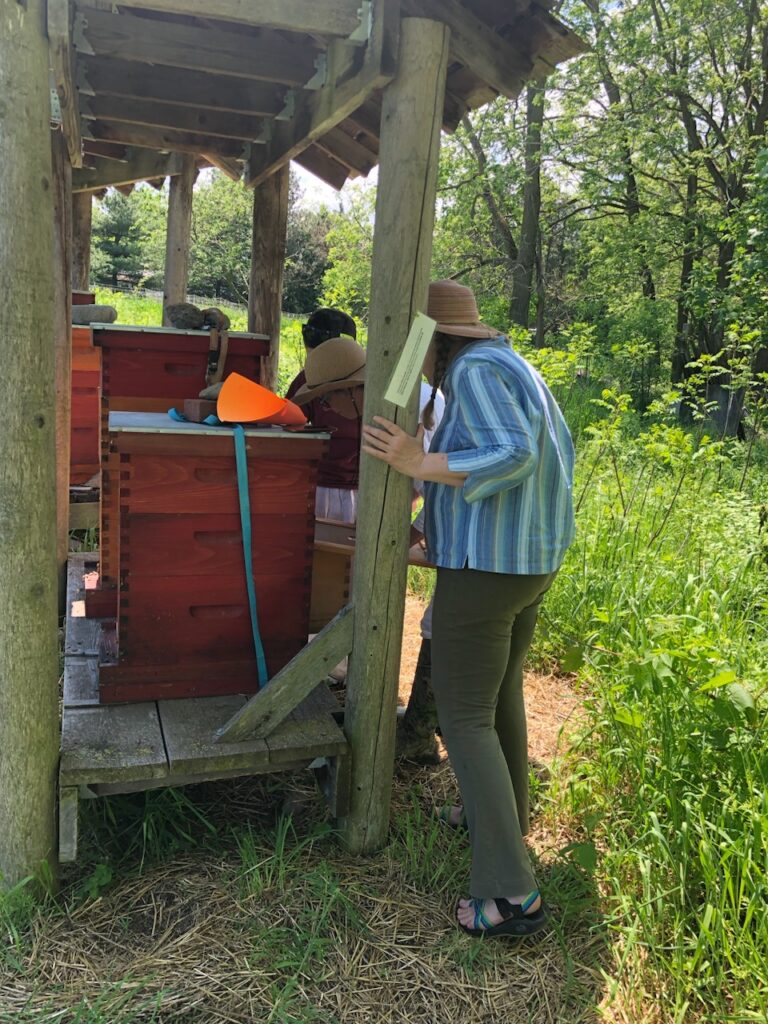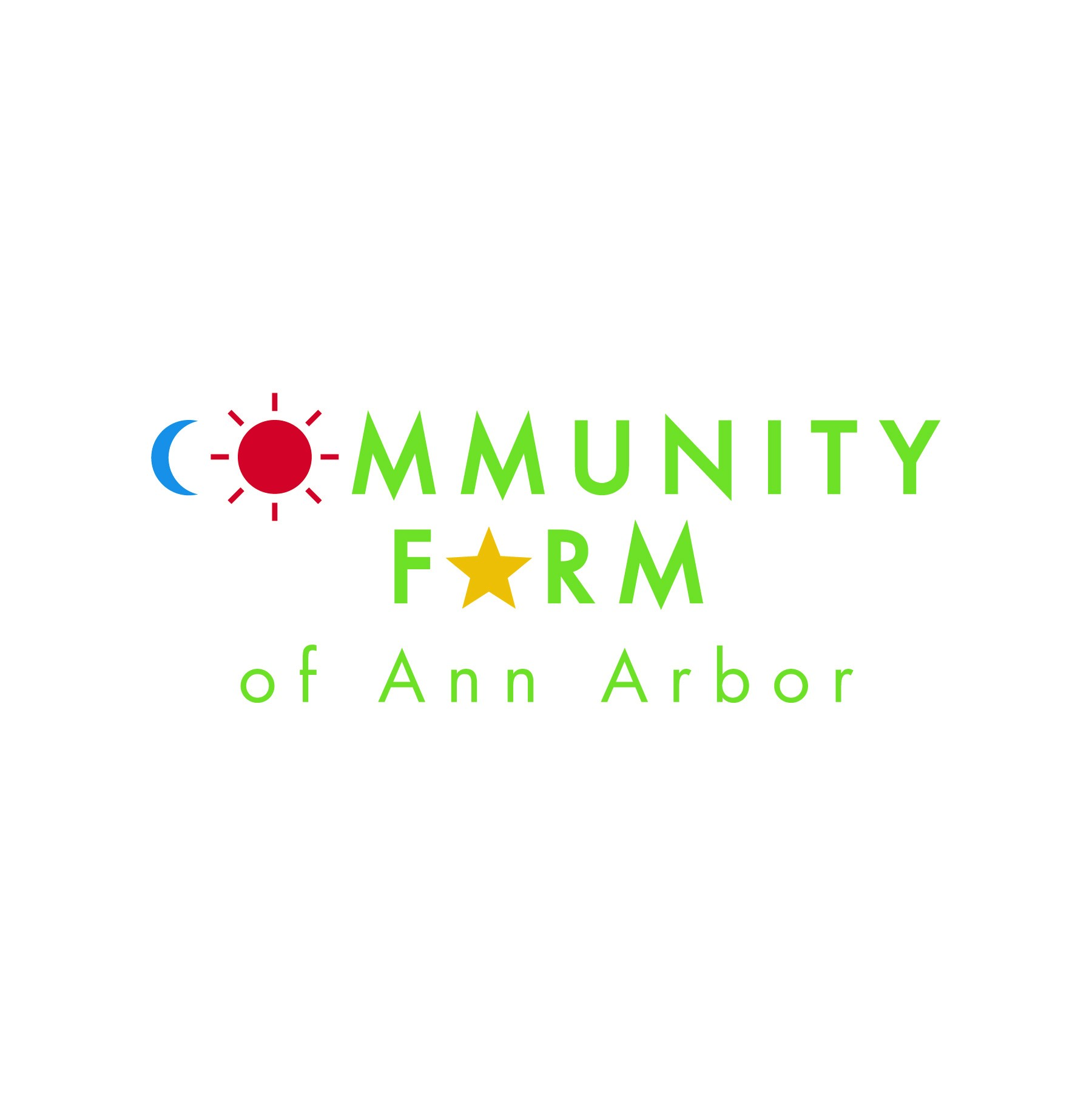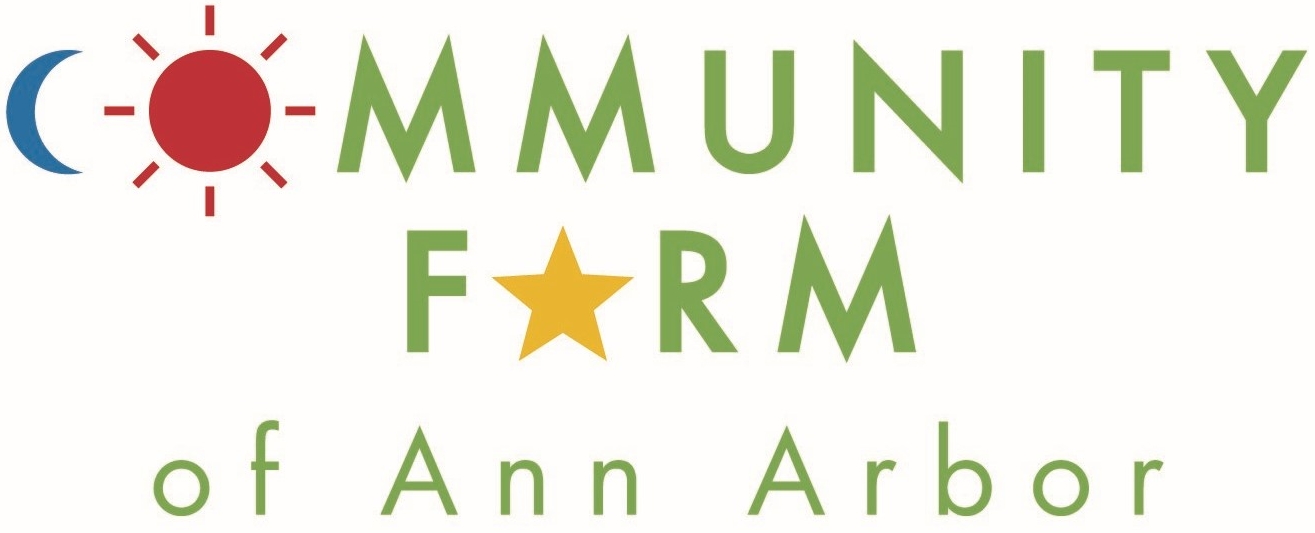Bees!
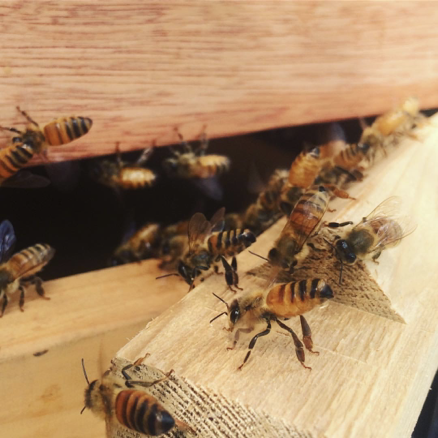
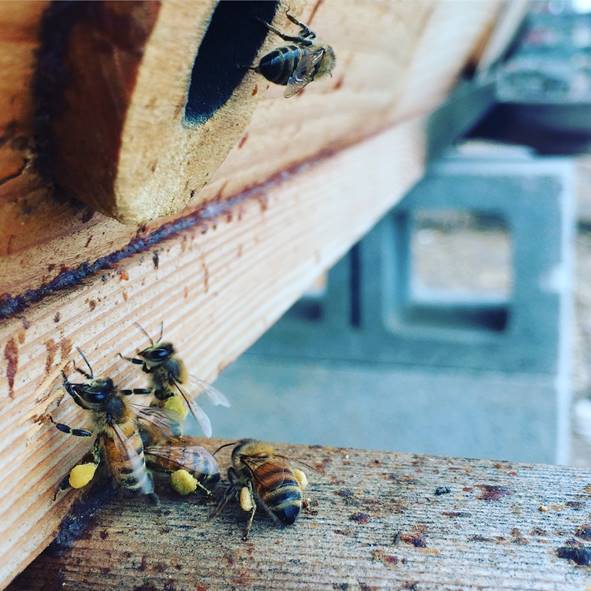
Supporting Honeybees at CFAA
Honeybees both contribute to, and benefit from, the farm landscape. Bees are semi-domesticated
insects, so managed hives rely on beekeepers for managing space and supporting their well-being,
so they are able to serve as pollinators.
Tending
There are many ways to keep bees, and at CFAA bees are tended in the tradition of Spikenard
Farm Honeybee Sanctuary in Floyd, VA. The underlying philosophy involves supporting the
health of the bee by allowing its instincts to be expressed. This way of keeping bees could be
called Sanctuary Beekeeping.
Swarming
One of the strongest impulses is swarming, and at CFAA we celebrate swarms, reveling in the
joyous expression of expansion. Swarming is how honeybees create new colonies, and is their
natural way of reproducing. When there is abundant nectar flow in the spring, and the colony
has expanded after a winter of contraction, the existing queen and half the workers leave the
colony and land nearby on a tree branch (or other structure). They hang in a cluster until they
have decided on a new nest cavity, likely a hollow tree. While they are clustered and without a
home, they can be collected in a box and hived by the beekeeper. If the swarm is too high to be
collected by humans, the bees will continue the process of deciding (democratically) on their
new location, following the enthusiastic dancing of scout bees on the cluster. Once the
decision is made, they head off to their new home and begin building wax comb. Comb building
happens quickly as bees fill up on honey before swarming.
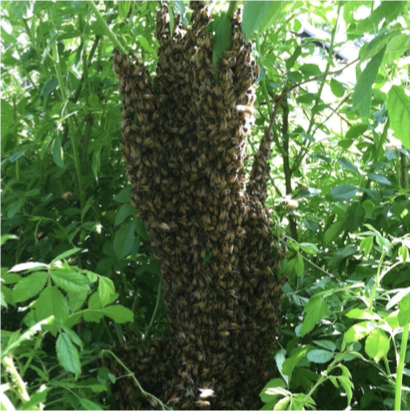
Honeycomb
Building comb naturally, even in a conventional hive, is instinctual, and most likely to occur
during the spring expansion phase of the organism. Each bee can release 8 wax platelets a day
to contribute to new comb. Bees manipulate the platelets with their mandibles and work (in
the dark) to form perfect hexagons. Comb serves as the womb, pantry, and dance floor for
communicating the location of good sources of nectar and pollen. To encourage comb building
in swarms that are collected bees are fed a mixture of honey and bee tea, which is made from a
variety of plants that support the health of the bee.
Hives
Hive checks are done on an as-needed basis to ensure health, manage expansion in the spring
and contraction in the fall, and especially to confirm that there is a viable queen a few weeks
after a swarm. The hive is opened again for honey harvesting, only when there is truly an excess
after the winter.
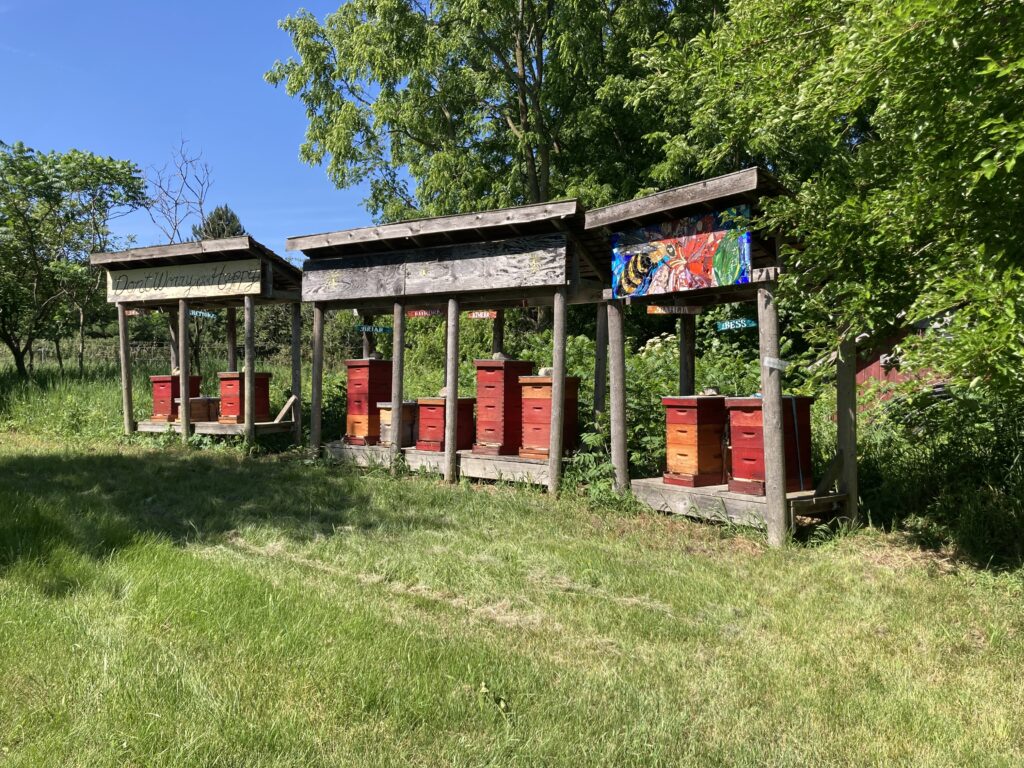
Nature and Seasons
The bees are influenced by the sun (among other forces). Colonies are in an expansion phase
from winter to summer solstice as the days become longer and the sun is higher in the skk, and
in a contraction phase as we head back toward the winter solstice as the sun’s trajectory
becomes lower in the sky.
Colonies
Each colony at CFAA is named, as each has its own personality. The matriarch of the apiary is
Athena, situated on the middle platform going back to at least 2016. Her daughter hives are
Acacia and Aurora. Bess is the sentinel hive, often on the lookout for danger to the apiary. She
is most likely to sting unsuspecting humans. Her daughter hives are Briar and Betony. Dahlia
was previously at the farmhouse, and her daughter hive is Danae. There is a small colony from a
swarm that was on the ground in front of the hives. Her mother hive is unknown and her name
is Xenia. She will be added to a hive should there be a hive that ends up not having a viable
queen after swarming.
Visiting
While visiting the farm feel free to watch activity at the hives. You might observe fanning at the
entrance to maintain hive temperature, different colors of pollen arriving on the legs of bees,
bearding on hot humid days (bees hanging outside in a cluster), and general buzzing about.
Wearing a hat and not standing in the flight path of the bees is recommended.
